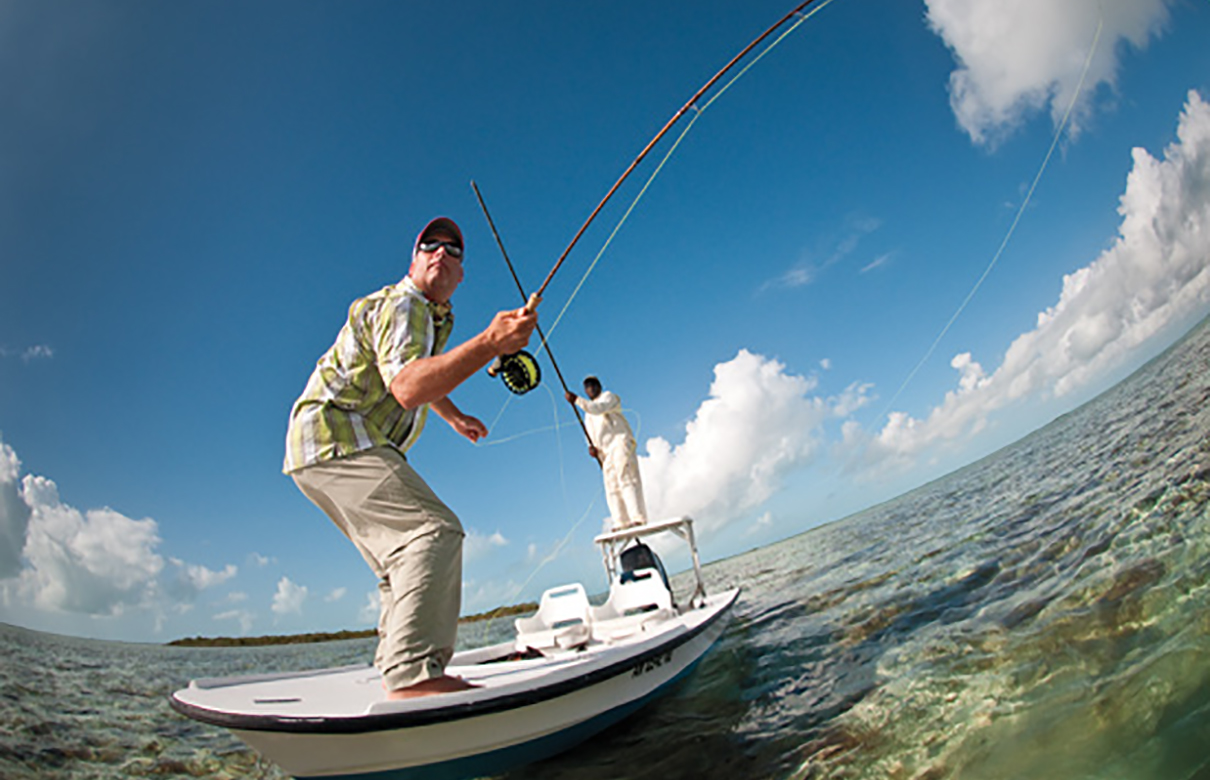Saltwater Casting
By: Captain Bruce Chard
 When using a backcast, turn your body slightly sideways and cast sidearm so you can swivel your head and keep your eyes on your target. (Louis Cahill photo)
When using a backcast, turn your body slightly sideways and cast sidearm so you can swivel your head and keep your eyes on your target. (Louis Cahill photo)
Practicing your casting before a saltwater trip will improve your success on the water
We have all heard the old saying “practice makes perfect.” But repetition doesn’t make this old adage true. Let’s face it. Saltwater fly fishing is tough. Wind, weather, and difficult fish force errors on even the most experienced fly fishers from time to time. There are simply too many uncontrollable variables to become “perfect,” but with practice you can reduce your margin of error and become damn proficient – taking advantage of a higher percentage of your opportunities.
In saltwater casting there are three skills that almost everyone can improve: using the backcast to present the fly, making a short (quick) cast and increasing line speed. Here are my thoughts on why these three skills are so important (and underappreciated) and how to improve on them.
Backcast Delivery
If you are ambidextrous, you never have to worry about what direction the wind is blowing or which direction a fish is coming from. For the rest of us, using your backcast to present the fly accounts for up to half of your opportunities – so you’d better make those backhand casts count.
READ THE FULL STORY ON FLY FISHERMAN